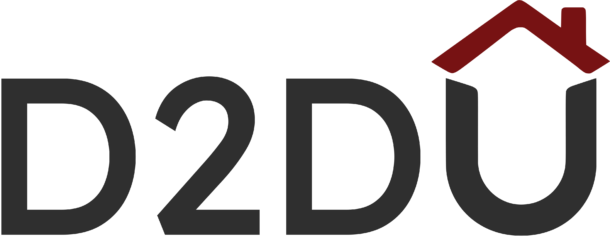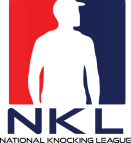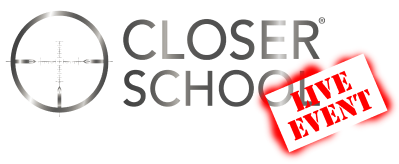Webinars blend the scalability of digital content with the engagement of live workshops. The guide notes that a webinar gives you many of the benefits of in‑person training demonstrations, Q&A, polls without travel or cost. Participants can ask questions and receive personalised answers in real time.
Webinars also keep pace with industry trends since companies host them on cutting-edge topics to attract attendees. In short, they offer convenience, interactivity and immediacy, making them one of the most accessible training formats today, especially when offered as Free Webinar Sales Training.
How to Register and Prepare for Live Webinars
Registration typically involves filling out a simple form, but thoughtful preparation maximizes the value:
- Choose wisely – Select webinars relevant to your role and skill gap. Look for credible hosts like Revenue.io, HubSpot or Sales Hacker. Check the level (beginner vs. advanced) and confirm the time zone.
- Register early – Popular sessions fill quickly. Early registration ensures a seat and prompts reminder emails. Add the event to your calendar immediately.
- Block distractions – During the session, close unnecessary apps and silence notifications. Focus is crucial for interactive segments.
- Prepare questions – Anticipate one or two questions tied to the topic (e.g., “How do you handle prospects who dodge discovery questions?”). Jot them down beforehand.
- Download materials and test tech – If handouts or slides are available, print or download them for reference. Log into the webinar platform a few minutes early to resolve technical issues.
Treat free webinars with the same respect as an in‑person workshop—your attention and preparation determine your return.
What to Expect from a Quality Free webinar Sales Training
Quality webinars share several traits:
- Expert presenters – Sessions are led by seasoned trainers or top-performing sales leaders. Introductions typically highlight their credentials.
- Clear agenda – A good webinar outlines objectives and a structured timeline. Lack of structure is a red flag.
- Interactivity – Expect polls, chat prompts and Q&A sessions that tailor the discussion to attendee needs. Participate actively to enhance your experience.
- Live demonstrations or role‑plays – Instructors often illustrate techniques by role‑playing a cold call or navigating a CRM. Watching experts handle real‑world scenarios reinforces learning.
- Genuine Q&A – Quality hosts answer questions candidly, sometimes admitting limitations or sharing nuanced advice.
- Minimal sales pitch – The focus should be education. A brief mention of the host’s services at the end is fine, but extended product pitches undermine the session.
By the end, you should leave with practical takeaways or supporting materials and feel that the hour was engaging and worthwhile.
How to Take Notes and Ask Effective Questions During Sessions
To maximise retention:
- Choose a note‑taking method – Use a two‑column format: key points on the left and personal applications on the right. Focus on big ideas rather than transcribing slides.
- Capture visuals – Screenshot important slides (frameworks or charts) if allowed.
- Use chat strategically – Share quick insights or answer poll questions in the chat, as writing can reinforce memory.
- Ask concise, specific questions – Instead of broad queries, frame questions around your context (e.g., “What’s an ideal length for a proposal to keep prospects engaged?”).
- Submit questions promptly – Don’t wait until the end; if the platform allows, send questions when they arise.
These practices ensure you capture actionable insights and encourage interaction.
Reviewing Replays and Applying Key Takeaways
Nearly half of webinar views occur via replay. Use the recording to solidify learning, just like you would in a sales bootcamp.
- Watch again – Revisit dense segments, pause and transcribe key phrases or scripts.
- Share with the team – Forward the replay to colleagues and discuss key points; collective reflection reinforces learning.
- Implement immediately – Apply one takeaway the same day—for example, using a new objection‑handling framework on your next call.
- Collect supplementary resources – Download any bonus materials or templates provided.
- Reflect and document – Write down two or three takeaways and how you’ll apply them.
- Watch promptly – Replays are often available for only 30 days. Schedule time to review soon.
Where to Find Free Sales Webinars and Types of Sessions
Free webinars are offered by sales training firms, software vendors and industry associations. Look to reputable hosts like Sales Gravy, RAIN Group or HubSpot for sessions that cover skill‑focused workshops, product demonstrations and industry roundtables. Choose events that match your role and verify that the speaker’s credentials are solid rather than a disguised sales pitch. If you sell into specific verticals, prioritise webinars tailored to those industries for maximum relevance.
Building a Post‑Webinar Action Plan
After the session, identify one technique to test, decide when you will apply it and track the results. Sharing your plan with a manager or peer creates accountability and helps turn insights into lasting changes.
Balancing Webinars with Other Training Formats
Use webinars as quick refreshers or inspiration, but rely on deeper courses and hands‑on coaching to build complex skills. Keep a running list of webinars attended, their key takeaways and your next steps to ensure each session contributes to your development. Ultimately, free webinars are a convenient way to stay current and build momentum between deeper training engagements.
FAQs
How often are free sales webinars held?
Frequently—there’s likely a free webinar happening every week. Professional associations, sales‑tech vendors and training firms host sessions monthly or even weekly. Subscribing to newsletters from organisations like Sales Hacker or following industry communities on LinkedIn keeps you informed.
What’s the best way to prepare for a webinar?
Register early, block the time on your calendar, read the session description and prepare specific questions. If materials or exercises are suggested, have them ready.
Can webinars replace in‑person sales training?
Webinars excel at knowledge transfer and interactive Q&A, making them ideal for updates and skill refreshers. However, complex interpersonal skills—advanced negotiation or presentation skills—benefit from hands‑on practice and nuanced feedback available in in‑person workshops. A blended approach often yields the best results.























